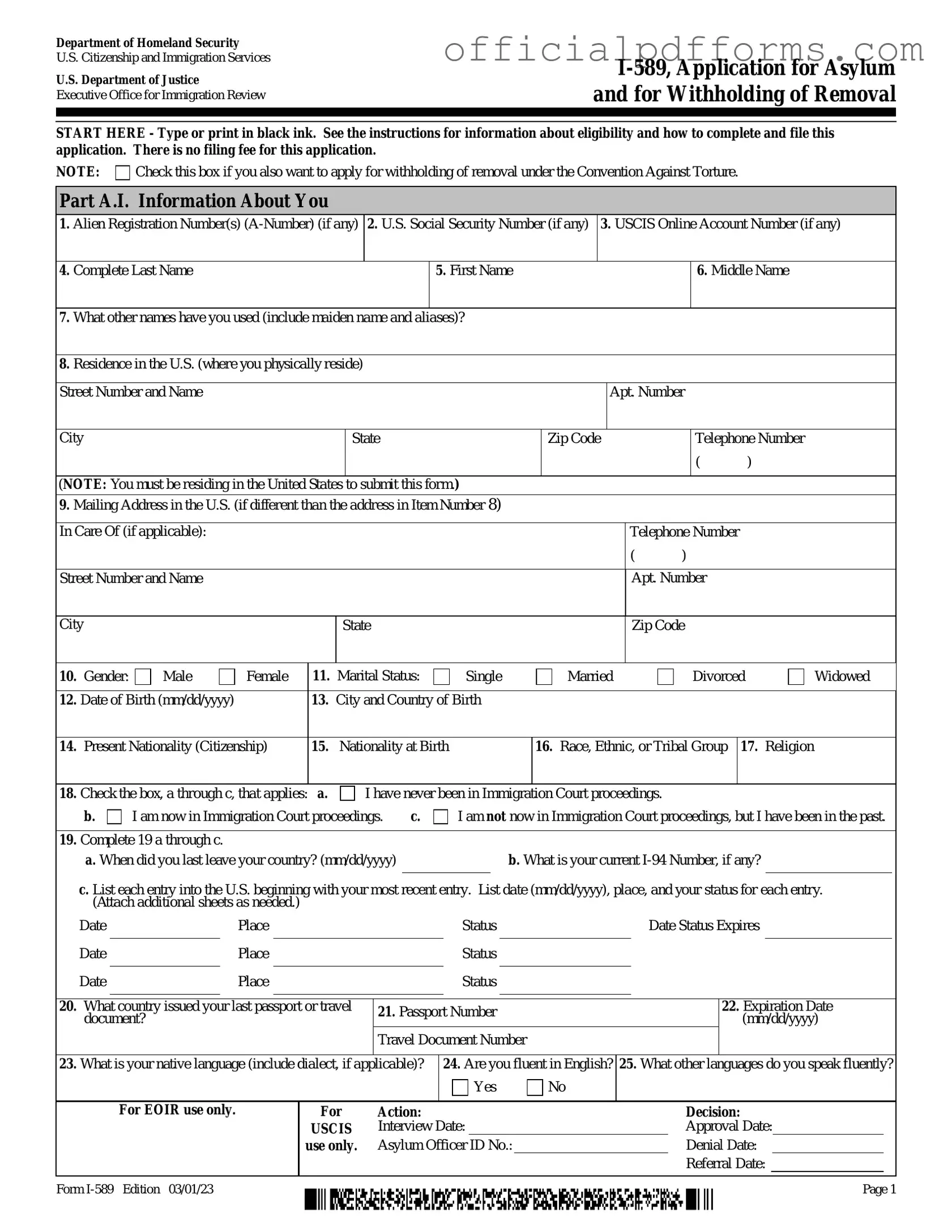The USCIS I-589 form is an application for asylum and for withholding of removal. Individuals use this form to request protection in the United States due to fear of persecution in their home country. It allows applicants to explain their reasons for seeking asylum and provides a formal process for their claims to be evaluated.
Any individual who is physically present in the United States and fears persecution in their home country may file the I-589 form. This includes individuals who are already in the U.S. or those who may be facing removal proceedings. However, there are specific eligibility requirements that must be met, such as being within one year of arrival in the U.S. for asylum claims.
The I-589 form requires detailed personal information, including:
-
Your name and contact information
-
Your date of birth and country of origin
-
Your immigration status and history
-
A detailed account of the persecution you fear
-
Any family members included in your application
Providing thorough and accurate information is crucial for the evaluation of your application.
There is no filing fee for the I-589 form. This allows individuals seeking asylum to submit their application without the financial burden of a fee. However, applicants should be aware that additional costs may arise from legal assistance or other related expenses.
The processing time for the I-589 form can vary significantly based on several factors, including the applicant's specific circumstances and the workload of the USCIS office. Generally, it may take several months to a year or longer for a decision to be made. Applicants can check the USCIS website for updates on processing times.
After submitting the I-589 form, applicants will receive a receipt notice from USCIS. This notice confirms that the application has been received. Subsequently, applicants may be scheduled for an interview or asked to provide additional information. It is important to attend any scheduled interviews and respond promptly to any requests from USCIS.
Can I include family members in my I-589 application?
Yes, applicants can include certain family members in their I-589 application. This typically includes spouses and children under the age of 21. It is essential to provide accurate information about each family member being included, as their eligibility for asylum may also depend on the principal applicant's case.
What should I do if my I-589 application is denied?
If the I-589 application is denied, applicants may have options for appeal or may be able to seek other forms of relief. It is advisable to consult with an immigration attorney or legal expert to explore the next steps and determine the best course of action based on the specific circumstances of the case.
For more information about the I-589 form, applicants can visit the official USCIS website. The website provides comprehensive resources, including instructions for completing the form, eligibility requirements, and updates on processing times. Additionally, legal aid organizations may offer guidance and support for individuals completing the application.
